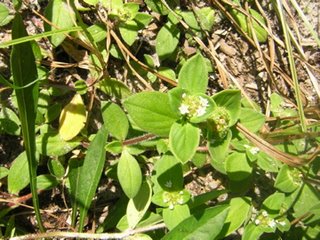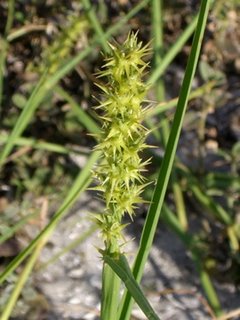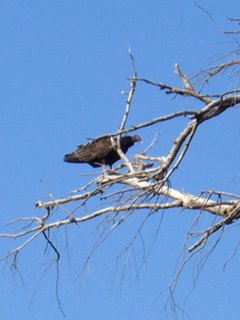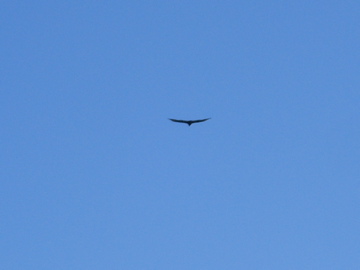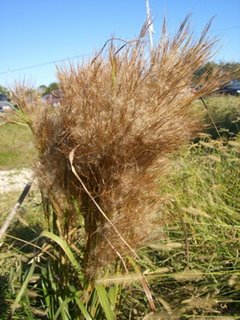 In one of his most revealing passages, Ralph Waldo Emerson wrote that “nature is the vehicle of thought.” In another he wrote that “Nature always wears the colors of the soul.” In the first passage he suggests that the life, collectively, mirrors our inner lives because it is the raw material for ideas and meaning; we cannot have a stormy thought without the actual storm. In the second he suggests that we bring a lot of our own moods and pre-conceived ideas to our interactions with the life, collectively. His challenge to us in Nature is to have the Discipline to distinguish these poles of meaning.
In one of his most revealing passages, Ralph Waldo Emerson wrote that “nature is the vehicle of thought.” In another he wrote that “Nature always wears the colors of the soul.” In the first passage he suggests that the life, collectively, mirrors our inner lives because it is the raw material for ideas and meaning; we cannot have a stormy thought without the actual storm. In the second he suggests that we bring a lot of our own moods and pre-conceived ideas to our interactions with the life, collectively. His challenge to us in Nature is to have the Discipline to distinguish these poles of meaning. Aldo Leopold, like Charles Darwin, severed the human imagination from questions of nature. There is no vital interaction on this level; this is the veil of the modernist sciences, I think. For Aldo, the natural world was simply material that could be and had been “forged” into civilization; or a location where we must go, by foot or pack train, in order to renew our humanity and democratic spirit. The “land mechanism” was finished before we got there. Wilderness (the perfect, the finished “land mechanism”) could only shrink. We had trammeled the Garden, and once trammeled, no possibility for redemption. Leopold followed his metaphor too far, I think;
Aldo Leopold, like Charles Darwin, severed the human imagination from questions of nature. There is no vital interaction on this level; this is the veil of the modernist sciences, I think. For Aldo, the natural world was simply material that could be and had been “forged” into civilization; or a location where we must go, by foot or pack train, in order to renew our humanity and democratic spirit. The “land mechanism” was finished before we got there. Wilderness (the perfect, the finished “land mechanism”) could only shrink. We had trammeled the Garden, and once trammeled, no possibility for redemption. Leopold followed his metaphor too far, I think;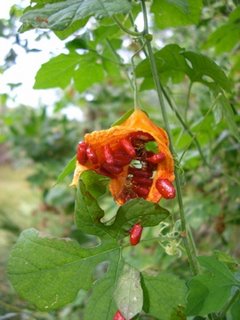 we should be cautious not to do the same. When you take a cog and a wheel out of a machine, it is no longer a machine; it is only a hunk of metal (in a way, it becomes nature again). But when you take a cog or a wheel out of an ecosystem (by which we can understand Leopold to mean the removal of an entire species; his life example was wolves) it is changed, but it does not cease to be an ecosystem. This is a fundamental confusion that seems always to follow Leopold¹s wilderness logic. These ideas have spawned a kind of environmentalist Taliban, the evangelical fundamentalist naturist, extremists who, in their zeal to prove their faith, work to deny us our full birthright, “the great apparition that shines so peacefully around us.”
we should be cautious not to do the same. When you take a cog and a wheel out of a machine, it is no longer a machine; it is only a hunk of metal (in a way, it becomes nature again). But when you take a cog or a wheel out of an ecosystem (by which we can understand Leopold to mean the removal of an entire species; his life example was wolves) it is changed, but it does not cease to be an ecosystem. This is a fundamental confusion that seems always to follow Leopold¹s wilderness logic. These ideas have spawned a kind of environmentalist Taliban, the evangelical fundamentalist naturist, extremists who, in their zeal to prove their faith, work to deny us our full birthright, “the great apparition that shines so peacefully around us.”Historically speaking, concern about invasive species was first articulated and first noticed by George Perkins Marsh in Man and Nature (1863). It grew out of Marsh’s reading of Darwinism, which cast Nature as the only perfect force and exiled humans from membership. But the idea did not emerge as a broadly noticed issue until
 the past decade. Hmmmm....? Now it has come to function as one of our most common shorthand condemnations of a species or ecosystems. “It’s pretty, BUT it’s an invasive.” Indeed, most of my environmental studies students can actually identify more invasive species here in Florida than native ones; in other words, the natural world they know is an illegitimate one as far as they have been told. They crave the pure, they long for some other place where the Garden has not been soiled; they have been taught to have nostalgia for someplace else. Without diminishing the need to actively manage a wide variety of plant and animal species in order to maintain particular kinds of ecosystems and the natural aesthetics and trophic complexity they provide, I would like to suggest that the separation of human imagination and nature embedded in the wilderness ideal and in the fear of invasives is exactly the opposite kind of ideology than we need to solve our habitat crisis.
the past decade. Hmmmm....? Now it has come to function as one of our most common shorthand condemnations of a species or ecosystems. “It’s pretty, BUT it’s an invasive.” Indeed, most of my environmental studies students can actually identify more invasive species here in Florida than native ones; in other words, the natural world they know is an illegitimate one as far as they have been told. They crave the pure, they long for some other place where the Garden has not been soiled; they have been taught to have nostalgia for someplace else. Without diminishing the need to actively manage a wide variety of plant and animal species in order to maintain particular kinds of ecosystems and the natural aesthetics and trophic complexity they provide, I would like to suggest that the separation of human imagination and nature embedded in the wilderness ideal and in the fear of invasives is exactly the opposite kind of ideology than we need to solve our habitat crisis.
